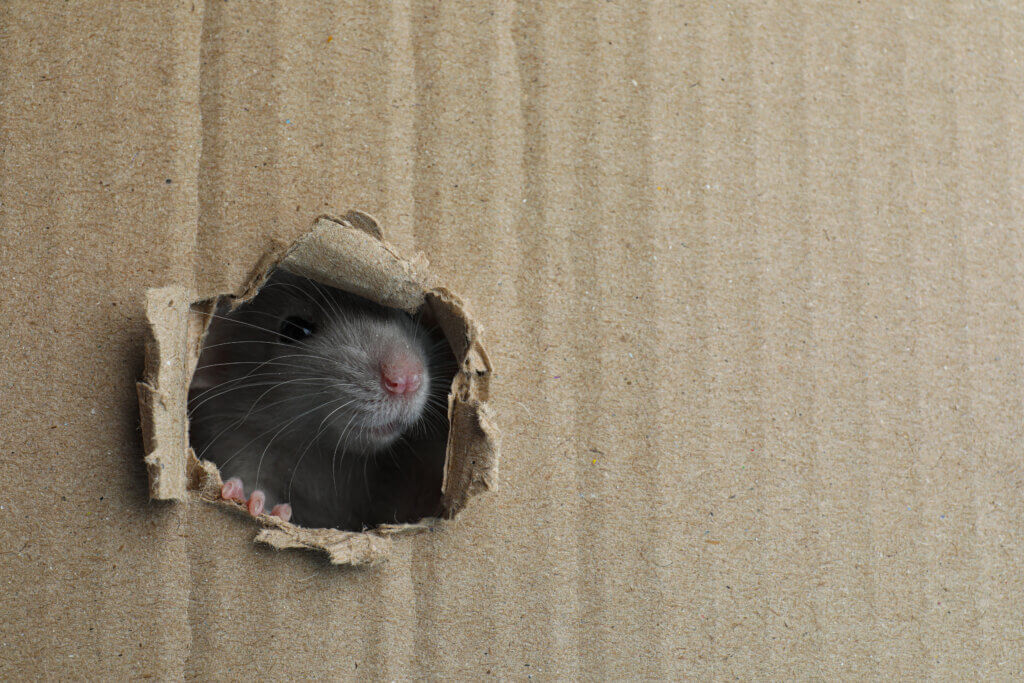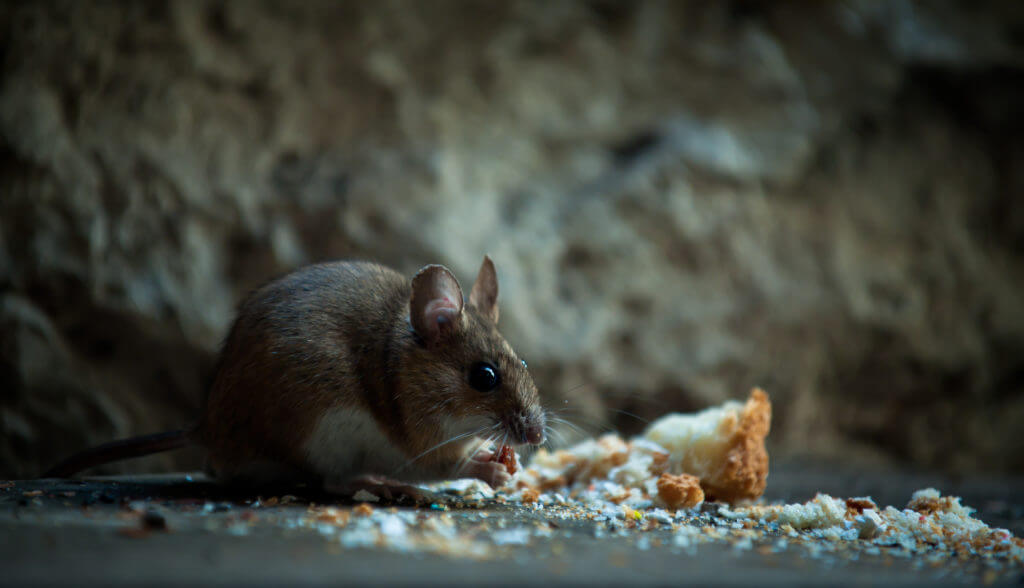Mice are small but mighty when it comes to damage. While mice are 5-inches long on average, they only require a hole the size of a dime to squeeze into your home. And what if a hole isn’t quite big enough? Rats and mice are crafty and will chew on any type of structure until they can fit through. This gnawing can cause serious – and sometimes dangerous – damage. Here are some ways rodents can affect your home right under your nose:
- Rodents have terrible eyesight, and your electrical wires look just like plants to them. They will gnaw on them until you are left in the dark or worse. In fact, household fires can be easily started when rodents chew on electrical wires. To top it off, many home insurance policies will not cover damage from rodents.
- Mice find refuge inside of ducts and air returns, and they feel no remorse chewing through your home’s insulation to get there. When rodents find comfort inside of your attic insulation, heating and cooling bills can skyrocket.

Rodents’ teeth are so powerful, they can severely damage your home’s foundation by gnawing through materials like wood, sheetrock, and brick (yes, brick)! You may not notice this gnawing until serious damage has already been done.
- If they can gnaw through brick, your furniture, cabinets, and food containers are no match for rodents and can be easy targets to get through to the good stuff inside. Be sure to check for gnaw marks on the wooden legs of tables and chairs and try to store your cereals, crackers, cookies, etc. in airtight containers instead of the cardboard box they came in.
Do You See the Signs?
Are you now looking around your home and wondering if you have a rodent problem? Check for the following signs to help determine if you have current or previous rodent activity in your home:
Rodent droppings and urine stains are typically found near food storage and in damp areas like under sinks. Droppings are dark in color and require immediate attention from a professional for removal. Depending on the state of the droppings, you may not even want to vacuum them up for fear that they will contaminate the air in your home. Call in a professional immediately on those.

Nests aren’t always made of outdoor materials. If you find a pile of shredded paper or cloth around your house, there’s a possibility that rodents have used your office supplies to make themselves right at home.
Scuttling sounds heard near your baseboards or in your attic can be a big indicator that rodents have already gotten inside your home. They are most active at night when people are less likely to be around so you may hear them while falling asleep in bed. It’s not a relaxing noise.
Tracks of active rodents can be identified by smudge marks on walls, footprints, and droppings. If you’re unsure if you have a rodent in the house, apply a small layer of flour in the suspected areas. If you do have unwanted housemates, you’ll likely see their tiny footprints left in the powder.
Gnaw marks on food packaging can help you identify the presence of rats or mice. Large marks tend to come from rats and smaller ones typically belong to mice. And that beautiful garden you just planted Mice love to feast on and burrow into plants for food and nesting.
Discovering that you have rodents in your home can be overwhelming. OPC Pest Services offers full coverage with a Four Seasons Pest Control Program that protects your home from pests year-round – including rats and mice. Our experts recognize that a single mouse (or just evidence of one) can mean there are more hiding behind your walls. Our team evaluates, inspects, and implements treatment plans proven to catch rodents and help keep them out.